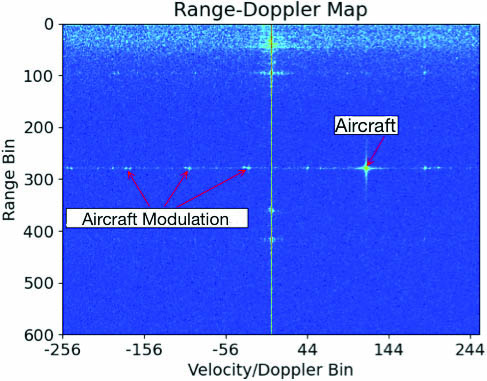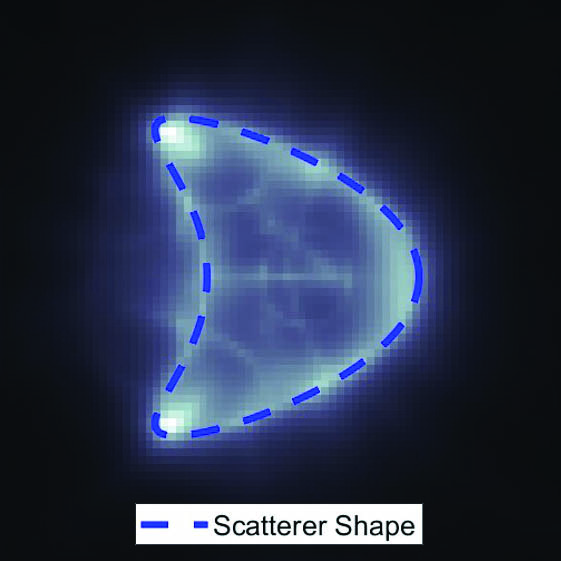The Value of Applied Mathematics Internships in Business, Industry, and Government
Summer internships are tremendously valuable experiences for undergraduate and graduate students in applied mathematics and computational science. Interns have the opportunity to explore possible postgraduate career paths and engage in important real-world applications of their coursework. They return to school freshly motivated and excited to delve further into relevant material. Internships can also help participants—particularly graduate students—build a small financial reserve and may lead directly to employment after graduation. Even if graduates ultimately pursue positions elsewhere, internship experience on a resume is particularly attractive to prospective employers. In addition, summer internships allow students to explore different geographical locations and diverse types of working environments.
Many workplaces in business, industry, and government offer internships. Students can find postings for openings at government research laboratories through the Department of Defense, Department of Energy, National Aeronautics and Space Administration (NASA), and various other agencies. They can also explore federally funded research and development centers (FFRDCs)—such as the Massachusetts Institute of Technology Lincoln Laboratory, The Aerospace Corporation, and MITRE—as well as university-affiliated research centers (UARCs) like the Georgia Tech Research Institute, Johns Hopkins University Applied Physics Laboratory, and the University of Maryland’s Applied Research Laboratory for Intelligence and Security.
Various laboratories and sections within each laboratory have distinctive cultures and different emphases on research versus development. Working environments can vary widely depending on the type of organization. For example, government settings typically provide good job security (often with civil service tenure) but generally lower pay and a potentially frustrating bureaucracy. In contrast, small companies commonly have very little bureaucracy and offer higher pay, but they can be riskier in that employees frequently must help bring in funding in order to get paid. The key is to find a compatible match between one’s working style and the job environment. Many employees find that intermediate choices like FFRDCs, UARCs, and medium-sized companies are a good fit.
Companies and laboratories enjoy having interns, as internship programs allow them to accomplish work with less expense and develop relationships with students and universities. Many organizations think of internships as extended job interviews. Some companies and labs hire year-round interns, or encourage students to work with them during vacations or conduct part-time remote work during the academic year. Such projects can even become master’s theses or parts of doctoral dissertations. In some cases—and with appropriate coordination between an advisor and a willing partner at the organization in question—companies or labs might be able to pay students a full salary to work on projects that become their doctoral dissertations while simultaneously serving as company/lab deliverables. In this scenario, the student’s boss is typically on their Ph.D. committee and the student is in residence at the company/lab. Such a situation can be tricky to coordinate but benefits everybody when it is successful. The student receives better pay, completes their dissertation, and has a guaranteed job upon graduation; the company/lab accomplishes necessary work and gains a well-trained employee; the sponsor/customer is pleased with the project’s progress and the enlarged pool of trained personnel; and the university learns about important problems, can use the original student’s salary for another student, and establishes a better connection to the company/lab.
Below, several students from Colorado State University describe their internship experiences in the summer of 2022.
Andre Celestin: NASA Jet Propulsion Laboratory
I interned at NASA Jet Propulsion Laboratory (JPL) in the Algorithm Development Group within the Radar Science and Engineering Section. Project scientist Paul Rosen served as my mentor. We constructed a mathematical framework for an imaging satellite that will be sent to Enceladus, one of Saturn’s moons. The satellite will form images via synthetic aperture radar (SAR) interferometry, which employs image processing techniques to combine many measurements of a target. Due to time constraints, I spent most of my internship familiarizing myself with SAR interferometry by building simulators and image processing code. On my first day, I received a massive 64-core computer with two 3090 NVIDIA graphical processing units (GPUs) for writing my code. I utilized the machine’s full power by learning how to parallelize code and validate the results. I hope to return to JPL and work with Paul again because the experience was incredible; everyone at JPL is eager to talk about their ongoing projects and encourages you to succeed.
Jerett Cherry: U.S. Naval Research Laboratory

I interned at the U.S. Naval Research Laboratory’s (NRL) Radar Division in Washington, D.C., where I collaborated with engineers on research and development for radar systems. I learned about radar digital signal processing and wrote data analysis software for use in conjunction with a radar testbed. Data from this testbed is then pulse compressed and Doppler processed to form a range-Doppler map. This map plots reflections from moving and stationary objects in terms of range and Doppler shift (see Figure 1).
Radar signal processing utilizes the fast Fourier transform, convolution, and least squares problems. Our running joke for the summer was that convolution was the answer whenever we wanted to do something with the data, which was not far from the truth. I felt mostly at home as a mathematician working with engineers, though difficulties did sometimes arise mainly due to problems in translation. Engineers speak a dialect of math that is just different enough to cause confusion for mathematicians (imagine using \(j\) for an imaginary number).
Beyond the lab-based learning, I was able to network, explore a new city, and earn more money. Working for the government also comes with useful benefits like gaining a security clearance, which is an attractive qualification for many job openings. Experiencing the thriving dynamic range of experimental and theoretical projects at NRL has even helped me consider additional topics for my own research. Interning is the best use of your summer.
Cole Moore: U.S. Naval Research Laboratory

Like Jerett, I also interned with the NRL’s Radar Division. This internship served as an amazing opportunity for me to learn, meet new people, and explore an unfamiliar city. Most of my efforts focused on inverse electromagnetic scattering, and I specifically worked to develop faster methods for image reconstruction by using scattered microwave data (see Figure 2). This project involved the use of GPUs to accelerate computations and the implementation of multi-level algorithms to increase efficiency. In addition, I met and learned from many smart and passionate people; spending my summer in a new place provided ample occasions to get out and have fun. I would highly recommend interning to all of my fellow mathematics students.
Danny Long: Lawrence Livermore National Laboratory
I was fortunate enough to intern at Lawrence Livermore National Laboratory (LLNL). I broadly work within the field of uncertainty quantification, which is quite useful for many applications at LLNL. My project involved the use of adjoint methods to approximate derivatives for functions that require the solution of partial differential equations (PDEs), which in turn help efficiently propagate uncertainty throughout the calculations. I contributed to a codebase that utilizes GPUs to solve the PDEs. Doing so allowed me to experience the state of the art in high-performance computing and interact with a variety of experts in mathematics, physics, and engineering.
LLNL was very supportive and clearly wanted interns to have a valuable experience. I spoke with research scientists outside of my project group on numerous occasions to hear about other research areas and establish professional connections. I also learned about LLNL-funded Ph.D. opportunities and the LLNL Postdoc Program, for which summer interns are encouraged to apply.
Finding and Applying for Internships
Identifying and applying for internships naturally requires some effort. One way to begin the process is through networking, which involves reaching out to someone—such as an acquaintance from a conference—who has connections at an organization of interest. SIAM’s online Career Center provides a helpful list of internships and career information, and many organizations list internship opportunities in the “careers” section of their websites. Students can also email their resumes directly to anyone who conducts intriguing research and inquire about summer internships. It is best to start this process early so that the researcher in question has ample time to arrange funding.
A resume should help hiring managers or potential mentors identify an applicant’s skills and interests in order to best align those qualities with the tasks at hand. Listing technical courses and other relevant topics of study—including physics, computer science, statistics, and engineering (as well as math)—is also beneficial. In some cases, course projects can demonstrate practical experience. Computer skills are important as well, as many internships involve programming tasks. Hiring managers mainly look for evidence that applicants are interested in learning about their institution’s endeavors and enthusiastic about contributing.
The timing for internship applications varies widely. Deadlines can fall unexpectedly early (especially if a security clearance is needed) and may even occur before the end of October. For instance, Lincoln Laboratory and Sandia National Laboratories posted advertisements in late summer 2022 for internship positions in the summer of 2023. On the other hand, smaller companies may not finalize their openings until the spring if they are waiting for available funding. Furthermore, internship positions at large organizations often remain open until they are filled — so it is always worth seeking out an exciting opportunity, no matter when one’s internship search begins. Happy hunting!
About the Authors
Margaret Cheney
Professor, Colorado State University
Margaret Cheney is a professor of mathematics at Colorado State University. She is also a SIAM Fellow.
Andre Celestin
Graduate Student, Colorado State University
Andre Celestin is a graduate student in the Department of Mathematics at Colorado State University.
Jerett Cherry
Graduate Student, Colorado State University
Jerett Cherry is a graduate student in the Department of Mathematics at Colorado State University.
Cole Moore
Graduate Student, Colorado State University
Cole Moore is a graduate student in the Department of Mathematics at Colorado State University.
Danny Long
Graduate Student, Colorado State University
Danny Long is a graduate student in the Department of Mathematics at Colorado State University.
Stay Up-to-Date with Email Alerts
Sign up for our monthly newsletter and emails about other topics of your choosing.



